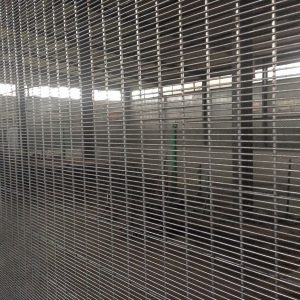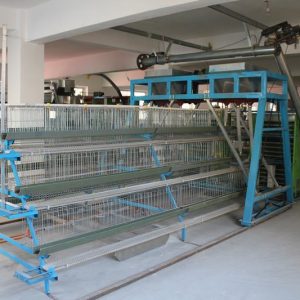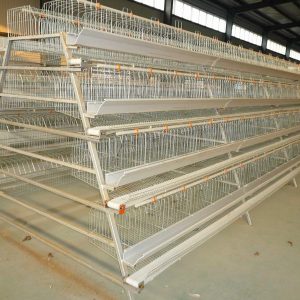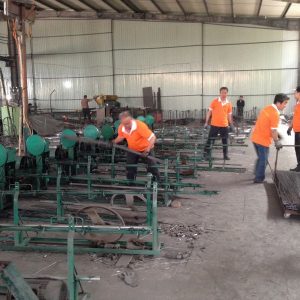
How to adjust the feed for laying hens in midsummer?
In summer, with high temperature and high humidity, chickens are often under heat stress, and their feed intake drops significantly, resulting in insufficient intake of various nutrients, affecting the performance and performance of laying hens. Under this situation, reasonable adjustment of feed nutrition levels and feeding methods is also an effective means to improve the performance of chickens in summer.
1. Increase the nutrient concentration of feed appropriately
In summer, when the ambient temperature exceeds 25 ° C, the feed intake of the chicken will be reduced accordingly, and the intake of nutrients will also be reduced accordingly, resulting in decreased egg production performance of the laying hens and poor egg quality, which requires the use of Diets with higher nutrient concentrations will be compensated. In the hot season, the energy requirement of laying hens is 0.966 megajoules per kilogram of feed metabolism that is lower than the normal feeding standard. Therefore, some experts believe that the energy concentration of feed should be properly reduced in summer. However, after the laying hens start production, energy is the key to determining the egg production rate. High temperatures often result in insufficient energy intake due to reduced feed intake, affecting egg production. Tests have shown that when 1.5% cooked soybean oil is added to the feed during the high temperature in summer, the egg production rate can be significantly improved. For this reason, it is necessary to appropriately reduce the amount of cereal feed such as corn so that it generally does not exceed 50% to 55%, and at the same time increase the nutrient concentration of the feed appropriately to ensure the normal performance of its production performance.
2. Increase protein feed supply as appropriate
In summer, when the weather is hot, the feed intake of chickens is reduced. Only by increasing the protein level in the feed as appropriate and ensuring the balance of amino acids can it meet the protein requirements of laying hens. Otherwise, egg production will be affected due to insufficient protein. The protein content in the feed of laying hens in the hot season should be increased by 1 to 2 percentage points compared with other seasons, reaching more than 18%. Therefore, it is necessary to increase soybean meal, cottonseed cake and other cake meal feeds in the compound feed, and the dosage is not less than 20% to 25%, and the consumption of animal meal and other fish protein feeds should be appropriately reduced to increase palatability and feed intake.
3. Use feed additives carefully
In order to avoid the high temperature and other factors that cause the stress reaction of laying hens and the decrease of egg production performance, it is very necessary to add some anti-stress additives to the feed or drinking water. For example, adding 0.1% to 0.4% of vitamin C and 0.2% to 0.3% of ammonium chloride in drinking water can significantly relieve heat stress. According to information, adding 0.04% bacitracin zinc in the diet can maintain the balance of intestinal flora, promote nutrient absorption, improve feed conversion rate, and also have anti-stress effects. Adding 0.1% fumaric acid to feed or drinking water can effectively relieve heat stress, increase chicken feed intake and increase egg production rate. Under stress conditions such as high temperature and high humidity, add 0.3% sodium bicarbonate to the feed (the method is to first dissolve in clear water and then mix, feeding after 10 to 15 minutes), to improve the heat resistance of laying hens and The egg production rate has a significant effect, and at the same time it can greatly reduce the egg breakage rate. But we must pay attention to adding doses, in case it is counterproductive.
4. Reasonable use of mineral feed
In the hot season, the phosphorus content in the diet should be appropriately increased (phosphorus can relieve heat stress), and the calcium content in the diet of laying hens can be increased to 3.8% to 4%. The ratio of calcium to phosphorus is 4: 1. However, too much calcium in the compound feed will affect the palatability. In order to increase the calcium intake, it will not affect the palatability of the laying hen feed. In addition to increasing the calcium in the feed, it can be supplemented separately to allow the chicken to eat freely. Meet their physiological needs.
This is a picture of how to adjust the feed for laying hens in midsummer
5. Pay attention to adding seasoning feed
In summer, when the temperature is high, the feed intake of chickens decreases. Adding a certain amount of flavored feed to the feed can greatly improve the feed intake. Therefore, in order to improve the palatability of the feed and increase appetite, on the premise of ensuring the quality of the feed, it is necessary to select safe and effective flavoring agents such as hexadecane, p-aminobenzoic acid, and sodium glutamate to increase the feed intake.
6. Adjust the time to feed
During the production, the feeding frequency can be increased appropriately. In summer, the temperature is lower in the morning and evening. At this time, the feed intake of laying hens is also relatively large. The feeding time can be adjusted. In the morning and at night, the feeding is added once to ensure the chickens. Eat enough feed.
In addition, some Chinese herbal medicines can also be used to alleviate or treat heat stress, such as Xiaoshusan, a mixture of Agastache, Honeysuckle, Banlangen, Atractylodes, Gentiana, etc., added to the feed at a rate of 1%. Clearing heat and relieving heat, detoxifying and dehumidifying, without any side effects.



